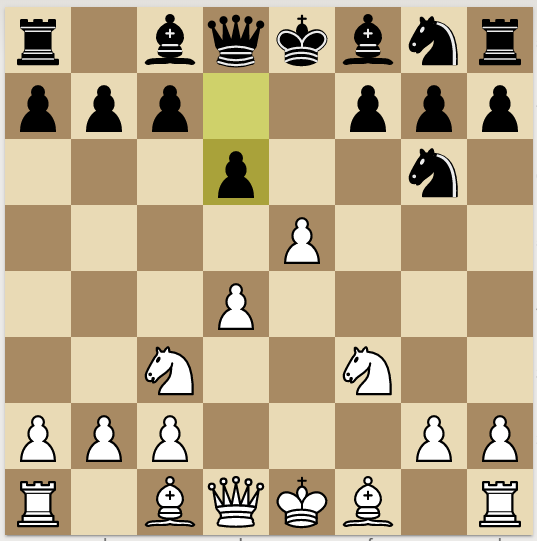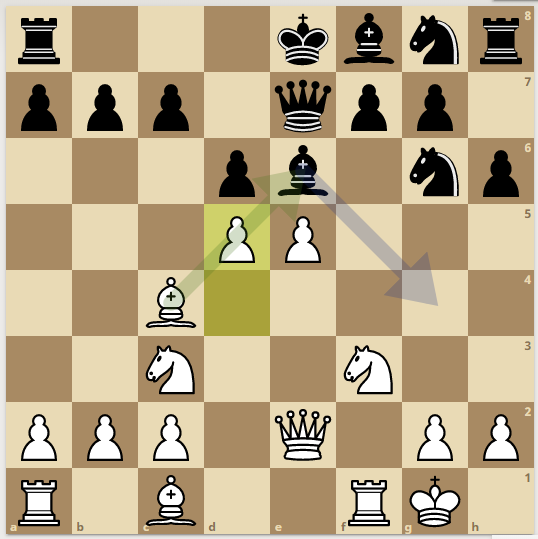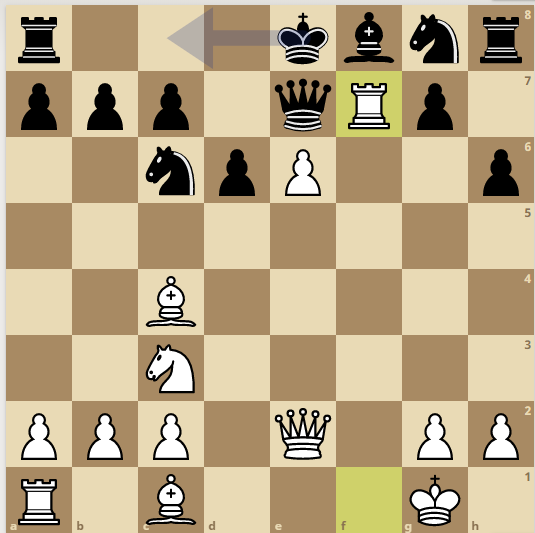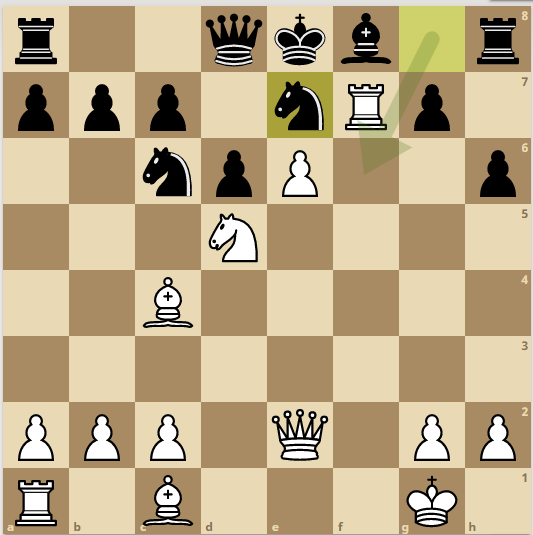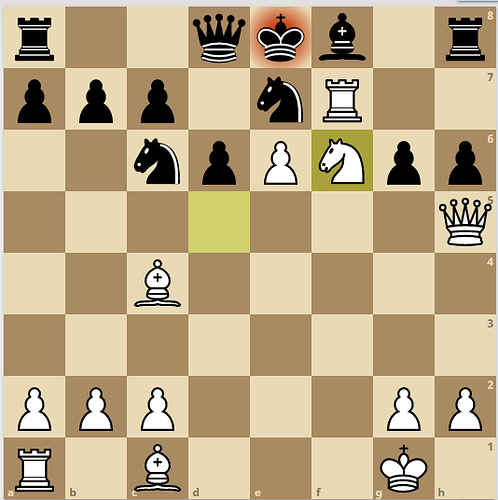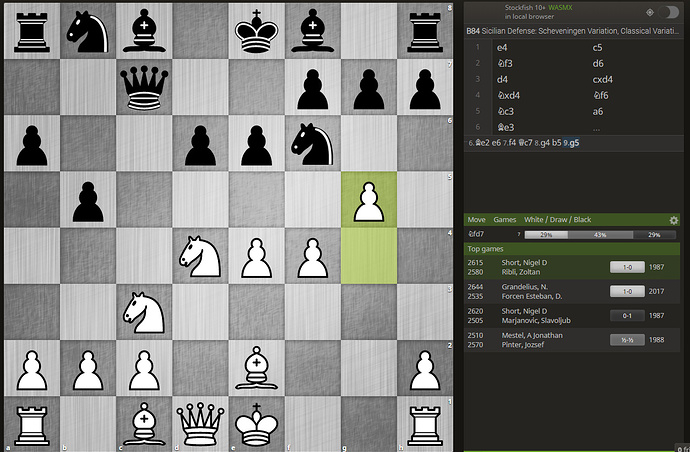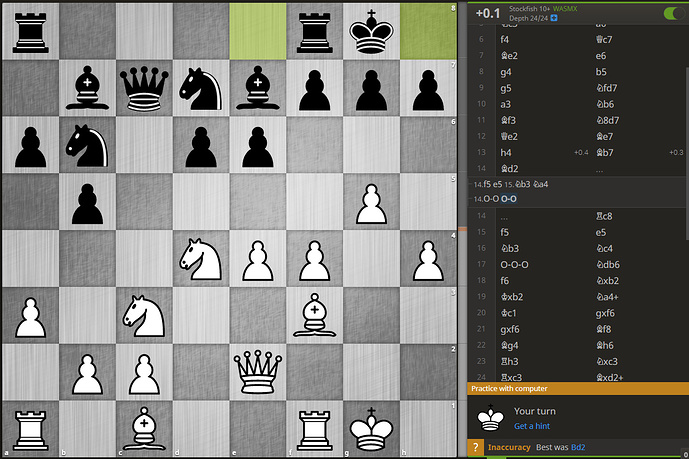In the last diagrammed position, probably the most common move I see is d6, exposing an attack on the queen. The good news is that this is +5 for White, but you do have to know what you’re doing. Start with Qxg7, but the plan is not immediately to take the h8 rook, as you must keep control of the g4 and g2 squares in the short term. The basic plan is to play Nf3 and Rf1 evicting the Black queen, at which point the h8 rook is doomed. Nce7 (aiming to play Ng6, protecting the h8 rook and blocking the queen from the g-file) complicates things and those lines are worth checking out to get a feel for how the position works.
Gross that we have to have Giri and Alekseenko in the Candidates rather than MVL. I don’t really know anything about the latter but he’s rated 37th in the world some 70 rating points below MVL, he is barely even in the 2700 club. I see Giri is slipping in the rankings, with any luck he will get crushed in the Candidates and will go away, never to be heard from again.
I like MVL, but all of the talk online about him being “unlucky” seems LOL to me. He has a history of stumbling in must-win events, and I don’t see him as having any chance of beating Magnus in a match.
I do agree with you about Giri. He should be good for a “-3” at the Candidates.
I just think MVL tends to play interesting games. I don’t think he’s “unlucky” exactly but the decision by the RCF to use the wildcard on a Russian player is lame when Grischuk and Nepo are already in. At least those two should produce some decent games.
I’d probably name Nepo and MVL as my favourite players, just consistently seem to steer games into interesting terrain. Ding Liren seems like a Carlsen-esque player and pretty clearly the world #2 (even though he isn’t on the rating list), and maybe Carlsen - Liren might be the most interesting matchup.
When Kasparov burst onto the scene it created an excitement not seen since pre-Karpov days. Ever since he retired I’ve felt that chess has needed a top GM who embodies daring, attacking play to make the game more attractive to very young kids (as well as the rest of us).
I’m rooting very much for Wei Yi (who may not make it to the top) and Firouzja to lead the next generation of super GMs.
I think in these days of strong engines it’s hard to imagine a player with an attacking style at the very top.
Having preferences means having weaknesses.
– Magnus Carlsen
He’s right. That said, Grischuk is currently 4 in the world and I’d probably consider him as attack-minded as Kasparov was.
One thing I forgot to mention about the Vienna Gambit is that another natural-looking move, Nc6 defending the pawn, is also a disaster for Black. Here’s a game I just played demonstrating the sort of thing that tends to happen after this.
- e4 e5
- Nc3 Nf6
- f4 Nc6
- fxe5 Nxe5
- d4 Ng6
- e5 Ng8
- Nf3 d6
It forces the same retreat from the knight, now I want to develop the light-square bishop so I can meet dxe5 with Qe2 without blocking it.
- Bc4 Qe7
- Qe2 h6
- O-O? Be6
- d5?
Two mistakes back to back there. I should have just played Nd5 rather than O-O, as it forces the queen off the e-file, that’s like +9 for White. I played O-O instantly, just seemed like the obvious thing to do. Then, I thought d5 looked really good, but the engine counts it my only “blunder” of the game and wants Bxe6. The point is that Black can’t take with the f-pawn in view of Qd3, where the g6 knight has no squares (except h4, but recapturing with Qh4 leaves a terminally undefended king) and putting something on the f-file to defend it walks right into the line of fire of the rook. So Black has to play Qxe6 and only then do you play the now-turbocharged d5.
- … Bd7
- e6 fxe6
- dxe6 Bc6
- Nd4 Ne5
- Nxc6 Nxc6
- Rf7
Hello, I’m a rook!
- … Qd8
- Nd5
Here I missed a forced mate in 5 starting with Qh5. Nd5 just looked very strong, getting another piece near his king with tempo (threatening Nxc6 winning the queen).
- … Ne7
Now I do consider Qh5 but I’m like, ehhh but he can just play g6. Goddammit. Oh, wait.
- Qh5 g6
- Nf6#
A postcard from the Vienna Gambit.
I’m trying it out but I’m premoving 3. f4!! for reasons, although I never had a serious King’s Gambit phase because it just seemed like a lot of memorizing weird lines with little logic where any mistake is an instant disaster, so maybe this relates to some pent up longing for KG kamikaze chess
16 year old wunderkind Firouzja is taking part in the world rapid/blitz championship in Moscow under the FIDE flag to avoid the Iran ban, and is currently 3.5/5, half a point behind Carlsen who has, unusually for him, got off to an ominously good start.
Following this for him will be the Tata Steel Wijk aan Zee tournament on January 10th where Carlsen and Caruana etc will be, which looks unmissable.
The article also speculates about whether his eventual nationality will be American or French.
Firouzja finished second, a point behind Carlsen, in another very impressive result for the 16 year old.
The blitz round starts in two days, and eyes will be on the teenager regarded by his peers as one of the top three in the world in this format.
Although I like Nigel’s tweet about Alireza, in general I find Nigel to be annoying and I wish he would go away.
Nigel is an asshole who used the occasion of writing an obituary for Tony Miles to brag about sleeping with Miles’ girlfriend.
Yes we know all that and I can’t abide him either, but hey ad hominem.
Learning the Najdorf has murdered my rating a little bit (currently 1915). I was wondering why I kept getting crushed by Bc4. I was just continuing e5 and Be6 as normal, but White plays Bb3 then later plants a knight on d5 and you are done for. I looked it up and I learn I am supposed to play e6 immediately to Bc4. You kind of have to know that whole line, including 7. Nbd7 if they play Bb3 immediately (with the threat of Nc5, attacking e4 and intending to trade off their bishop). The positions you get out of the Najdorf seem pretty good, but if you don’t understand the intricacies and go wrong you can end up in pretty hopeless positions.
Yes e6 is pretty much mandatory against Bc4 to protect d5 and blunt the bishop which usually retreats to b3 before or after Qc7 and can be exchanged by a Nc5, as you point out. One of the beauties of the Najdorf is how harmoniously black’s pieces cooperate in both attacking e4 and aiding the queenside attack (b5/b4 is an early threat), with Bb7 a key move.
In other lines another option after the usual Qc7/b5/Bb7 is Nd7 to b6 instead of c5, giving the option of d5 if white’s daft enough to allow it or failing that landing the knight on c4 supported by Qc7 and b5 . If a white bishop on e3 wants to exchange on b6, well, good (b3 to prevent Nc4 is a horrible anti-positional move, leaving the c pawn backwards and c3 weak), otherwise the knight on c4 is a real nuisance to white and he usually has to cede the bishop pair anyway as well as c4 to the black queen (with Rc8 there or coming).
A very useful quiet move I often like is Re8, overprotecting the Be7 and in some lines winning a pawn if Nxe4 attacks the white queen, while also allowing defence of g7 if white has played Qf3 to g3 and Bh6 by retreating the bishop to f8 (shades of the Spanish).
It seems a lot to learn at first but there are really only a few different concepts and the themes recur.
You’ve already found one early major divergence - between e6 and e5 (I play e6 exclusively because I’m lazy and it means far less to learn, but the e5 lines against everything except Bc4 are very interesting though a bit advanced for me I suspect - YMMV).
Another early divergence is if white plays an early a4, hindering black’s thematic counterplay with b5, which on the surface of it looks bad for black but if he continues b6, Nc6 and Bb7 I don’t think there’s much to worry about though I don’t get to face this line very often because positional players usually prefer other openings with white.
One thing I’ve been experimenting with recently in the e6/Qc7 main line is if white prepares the unusual Re1 and Bf4 to try to force e5 (which can be very dangerous), black can thwart this with a timely Nd7/Ne5, gaining control over f4 after Nxe5 dxe5 and not fearing doubled e pawns because black now has the semi-open d file and white’s pressure is gone with his rook on the e file looking misplaced and a loss of tempo. One idea here after protecting the e6 pawn is to prepare f5, and suddenly black is attacking in the centre and on the king side.
The other great thing about this opening is that while you’re learning about it you get to admire a lot of Kasparov and Fischer games. 
(this began as a one paragraph response but I got carried away).
I like to play g4 as white sometimes very early against the najdorf to get blacks knight off f6, sometimes I end up castling king side with pawns on f4 g5 h4; I dont think the computer ever approved of any such shenanigans but I play 3 minute blitz with no increment so shrug
Castling king side with no pawn cover sounds dangerous fun.
With white I play some version of the 150 Attack which is similar but with long castling and f3 instead of f4, supporting e4, g4, the Be3 from a black knight and the pawn storm - it can be very effective in 3 minute chess.
Here’s something that’s in book that I go for sometimes if black is cooperating
From what I remember the computer never liked when I castled in these types of positions but it activates the rook and puts it on the f file to support pawn push, but in this specific position you have to play a3 first and probably other things
For example, black has equalized here and it’s fun to play to regain advantage (also fun to defend also I assume but I don’t play Najdorf as black), but you can see below in the screenshot that in Short’s line the knight went back to b3 and he castled queen side. I just tried defending this as black against stockfish and I found the right move like 10% of the time so in a 3 minute game against ~1800 players I don’t mind this at all.
